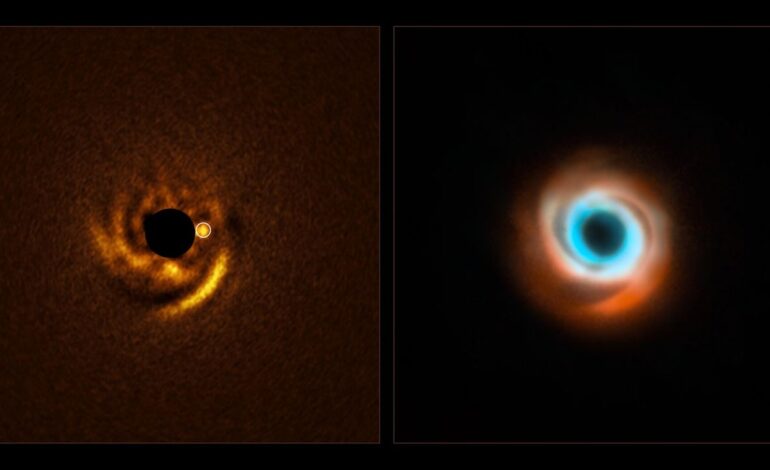Astronomers Discover Newborn Planet Shaping Dust Around Star

A team of astronomers has identified a potential newborn planet forming within the dust surrounding the sun-like star HD 135344B, located approximately 440 light-years away in the constellation Lupus. This significant discovery, shared on July 21, 2025, marks the first time scientists have observed a planet actively shaping its environment by sculpting intricate spiral arms in a protoplanetary disk.
The finding provides direct evidence supporting the theory that planets emerge from protoplanetary disks, which are massive, rotating clouds of gas and dust that encircle young stars. These disks often exhibit rings and spirals, suggesting the presence of forming planets. While this phenomenon has been theorized, the direct observation of a planet within such a structure is unprecedented.
Previously, astronomers had analyzed the protoplanetary disk surrounding HD 135344B using the SPHERE (Spectro-Polarimetric High-contrast Exoplanet Research) instrument at the European Southern Observatory’s Very Large Telescope in Chile. However, the recent utilization of the Enhanced Resolution Imager and Spectrograph (ERIS) allowed researchers to identify a planetary candidate embedded in one of the spiral arms—a location predicted by models indicating where a planet would influence the disk’s structure.
The potential planet is estimated to be twice the size of Jupiter and orbits at a distance comparable to that of Neptune from the sun, or about 30 times the Earth-sun distance. The lead researcher, Francesco Maio, a doctoral candidate at the University of Florence, expressed excitement about the detection, highlighting its significance in understanding planetary formation processes. “What makes this detection potentially a turning point is that, unlike many previous observations, we are able to directly detect the signal of the protoplanet, which is still highly embedded in the disc,” Maio stated.
The traditional method of discovering exoplanets often relies on indirect evidence, such as measuring the dimming of a star’s light, which can indicate a planet’s presence. In contrast, the current observation of the planet’s reflected light provides a more reliable confirmation of its existence.
Maio further emphasized the importance of this discovery, stating, “We will never witness the formation of Earth, but here, around a young star 440 light-years away, we may be watching a planet come into existence in real time.”
ERIS has also played a crucial role in other recent astronomical findings, such as the identification of a potential brown dwarf in the protoplanetary disk of the young star V960 Mon, located 5,000 light-years away in the constellation Monoceros. As researchers continue to explore these cosmic phenomena, the advancements in imaging technology are proving vital in enhancing our understanding of planetary formation and the evolution of star systems.
This remarkable discovery not only enriches our knowledge of the cosmos but also inspires future explorations into the mysteries of star and planet formation.






